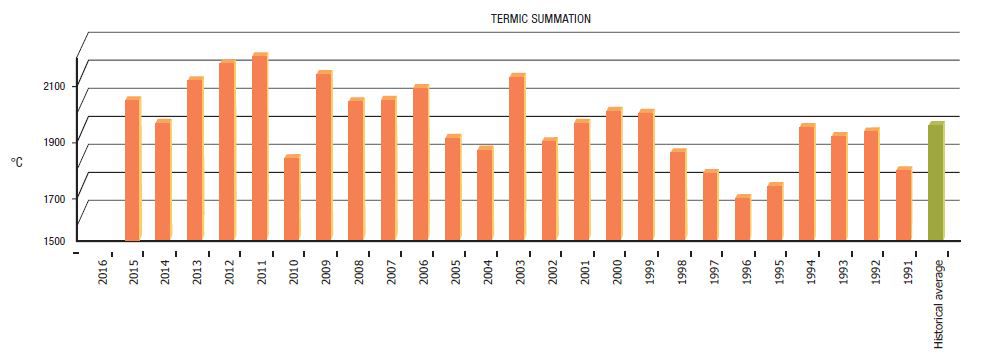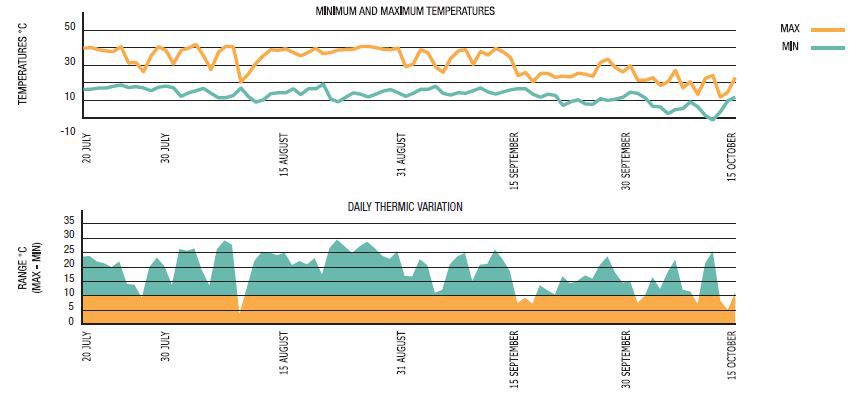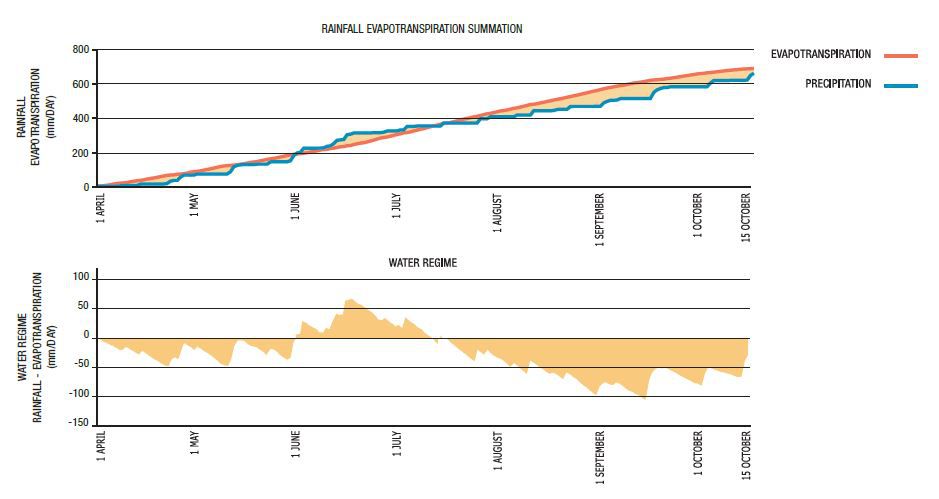VINTAGES
VINTAGE 2016
2016 GROWING YEAR
A season marked by a quite rainy spring and a slightly dry, typically Mediterranean summer, which yielded grapes in perfect health and concentrations were found to be above the historical average. The white wines tend to some opulence on the palate with aromatic notes that unfurl bright notes, depending on the vine and the vineyard.
WEATHER CONDITIONS
A quite mild winter and rainy above all in later weeks, developing into a warmer spring, especially in April. These conditions encouraged slightly earlier budding than usual, above all in early-maturing varieties. Conversely, the latter part of the spring was characterized by heavy rainfall, with almost 20 days of nonstop rain, varying in intensity from day to day. From 29 May to 17 June, 167mm of rain fell and temperatures were well below the seasonal average. From this phase, with minimum temperatures of 11 °C – 14 °C, maximums never in excess of 24 °C, after the summer solstice on 21 June there was a gradual progression to more typically summer conditions with maximum temperatures of 30 °C. Subsequently, the summer season continued without interruption until 1 October, and 30 days or more showed maximum temperatures of at least 38 °C and 18 days of at least 25 °C. On the other hand, minimum temperatures stayed quite low, in a range from 8 °C to 17 °C, because of clear night skies that allowed dispersion of daytime heat towards the upper layers of the atmosphere. There were at least 56 days in which day-night temperature ranges exceeded 20 °C, and of these, 3 days exceeded 30 °C. Rain on 2–3 October ended the summer season and lowered maximum temperatures to under 20 °C.
VINEYARD WATER CONDITIONS
In 2016 there were two main hydrometric phases: a late, very rainy spring, and a long summer which progressively succumbed to water stress towards the beginning of the harvest. The described water pattern was flanked by high winds from 23 to 30 August, which contributed to raising evapotranspiration (> 4.5 mm/day), thus leading to some dehydration of plant tissue.
WINEGROWING CONSIDERATIONS
The 2016 growing season did not start with the best of weather conditions. Heavy rainfall and low temperatures during the flowering period modified cluster morphology, especially in several varieties. The uneven and problematic flowering led to some abortion and irregular grape development in clusters that were already very loose. The varieties most affected by this weather were Chardonnay and Pinot Grigio. In the same period, again due to rainfall, vine fungal diseases, especially downy mildew, had significant impact.
With the arrival of summer, the situation stabilized, and the hint of water stress actually brought ideal vegetative balance to vines that had previously appeared to be suffering from excessive vigor. Early budbreak and favorable summer temperatures should have brought forward all the phenological phases, but precisely the significant temperature variations and above all low night temperatures, realigned veraison and maturation kinetics with historical averages.
Favorable temperatures from veraison to maturation paved the way to straightforward technological maturation, complete aromatic maturation and, in some varieties, even perfect phenolic maturation. The particular role played by the last few days of August should not be overlooked, with sustained windiness causing slight dehydration of berries and hence higher concentration, beyond the levels of maturation already expressed by the vines. Another striking aspect of the vintage was the preservation of grape acidity and, most importantly, low pH values due to lower salification of tartaric acid by potassium, an element absorbed in lower amounts when there are water stress conditions.




